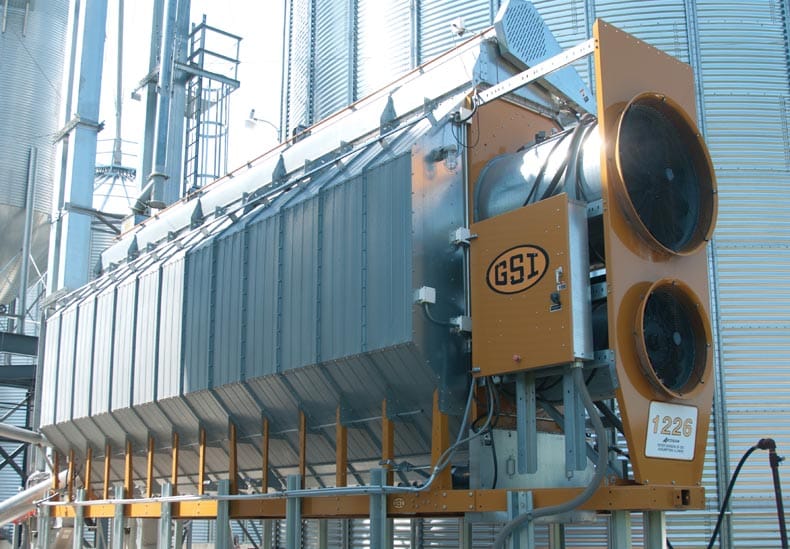'Can-do' approach in selection of grain dryer

Grain dryers make it possible to widen the scope of harvest work considerably. They help to condition grain and prepare it for further long-term storage. AgroCentre-Zernovye Tekhnologii Company recommends using tower and modular grain dryers by GSI, North America. The model range is wide enough. It is important to select the proper 'can-do' dryer.
We asked Sergey Sobolev, head of the sales department at AgroCentre-Zernovye Tekhnologii to give us some hints and tips for selection of a grain dryer.
Tip 1
To select a suitable grain dryer, one should clearly understand what portion of the harvest is going to be sent for drying. Daily yield of grains in also a very important factor. You need to know exactly the capacity of combine harvesters operating in the fields.
The grain dryer operation mode is also crucial. If a grain dryer is supposed to work continuously, not only in “heating-cooling” mode, you need to purchase buffer hoppers as well.
Tip 2
Carefully read grain dryer documentation. What has the manufacturer to offer? Often two grain dryers of equal specifications by different brands are offered at nearly the same price. But one manufacturer offers “just the bare machine” while the other provides a full package of accessory equipment. GSI grain dryers feature one of the most complete lines of accessory equipment.
Tip 3
Do not neglect high-tech! GSI was one of the first companies to introduce equipment for automated remote control of the drying process as the standard package of their grain dryers. For instance, there are computerised control panels with touch-screens which allow you to review records of processed grain and transfer data to USB and mobile devices. This feature helps you save time and optimise the process of decision making. High-tech equipment should be included in the basic package. This is very important, because separate purchases of such equipment could increase the prices by a factor of n.
GSI dryer details
GSI manufactures a massive number of modular grain dryers (capacity varying from 5 to 7 t/h). The dryers can run on different fuels such as natural gas, liquid propane and diesel.
Portable GSI grain dryers:
• optimal airflow is 5,200 m³/h per 1 tonne of grain
• burner operates in two modes, “high”/“low”
• patented grain inverters and accessories provide uniform drying of grains, control of speed and direction of grain flow inside the dryer basket
• patented built-in pressure-sensitive screw-type Sidekick moisture sensor, allows you to monitor moisture content inside the grain flow
• computerised control panel, full-colour touch-screen with USB slot provides simple visual control; there is also an additional WatchDog system to exercise control using mobile phones
• low-noise axial flow fans, 1,750 rpm
• galvanised panels, 600 g/m²
• 5 automatically calculated modes of drying-unloading (including automatic burner switch-off at the given level and automatic calculation of unloading rollers' rotation speed)
• larger perforation area of the “drying basket” comparing to the models by the other manufacturers
• optimal length of the “basket” considering the air/heating ratio
• additional systems for noise suppression and warm air recirculation (recovery)
Tower-type dryers (capacity from 30 to 3,000 t/h) are used to dry grain on a scale of commercial elevators and large farms.
Tower-type GSI dryers:
• vacuum exhaust from the main fans allows recirculation of heat from the cooling section; this ensures considerable gas economy
• large capacity (up to 450 t) allows you to use the dryer as a temporary store and aerator tower
• the fans are located inside the grain dryer, behind the grain columns, which reduces noise considerably
• grain dryer needs a minimal foundation, features minimal number of internal moving parts (the grain is flowing by gravitation), does not need much space for integration into the existing processing chain